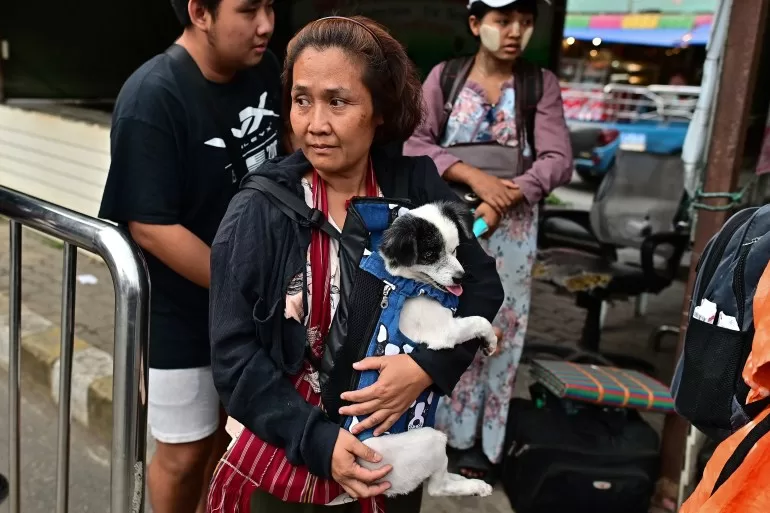Anti-coup fighters say they’ve taken control of the eastern border town, sending the last soldiers scurrying to withdraw.
Located on the eastern border of Myanmar and facing the Thai town of Mae Sot across the Moei River, it has been a focal point for many of the ethnic and pro-democracy groups who have struggled for decades against successive military administrations.
But in all that time, it has remained in the hands of government control, aside from a few minor tussles, with an understanding from the ethnic armed organisations based nearby that to unbalance power in the city was to threaten a vital economic portal for all of Myanmar.
That the town has now fallen to forces led by the Karen ethnic army, indicates that in the current civil war, new battle lines have been drawn.
For the moment the town is relatively unscathed by the fighting of the last month, but thousands of residents are fleeing into Thailand, fearing the military under Senior General Min Aung Hlaing will hit back with air strikes now that ground troops have gone.
I have been visiting Mae Sot across the border since I first arrived in Thailand more than 20 years ago.
But it was not until May 2008 that I first crossed into Myawaddy, slipping across the border with colleagues from Al Jazeera, posing as tourists, to report on a nationwide referendum designed by a different military regime, to placate international calls for democratic changes in Myanmar.
We found a town with few basic services and a population who were highly sceptical of the then-military government’s intention to bring real democracy to the people.
But the referendum opened a tiny window of opportunity, that eventually led to the elections of 2015, when the National League for Democracy (NLD) under Aung San Suu Kyi swept to power.
During that time Myawaddy thrived.
In the late 1980s, an estimated 40 percent of Myanmar’s gross domestic product (GDP) passed through Myawaddy, much of it moving illegally across the border.

More recently, new infrastructure has been added. A bridge for heavy goods vehicles, a cargo terminal and speeded-up customs procedures that have resulted in legal trade worth $1bn passing across the border every year.
On Thursday, as the remnants of the military fighting force fled to the cargo terminal requesting safe passage to Thailand, and air strikes hit the city, containers of food and tankers of fuel were still travelling across the bridge from Thailand.
That trade is desperately needed by an economy that has taken a beating since the February 2021 coup.
But millions of people inside the country have also been displaced from their homes by fighting, and as I sat under Friendship Bridge No 2, listening to fighter jets in the air, and watching armed groups patrol the streets, it was hard to imagine Myawaddy functioning as the gateway into Myanmar.
